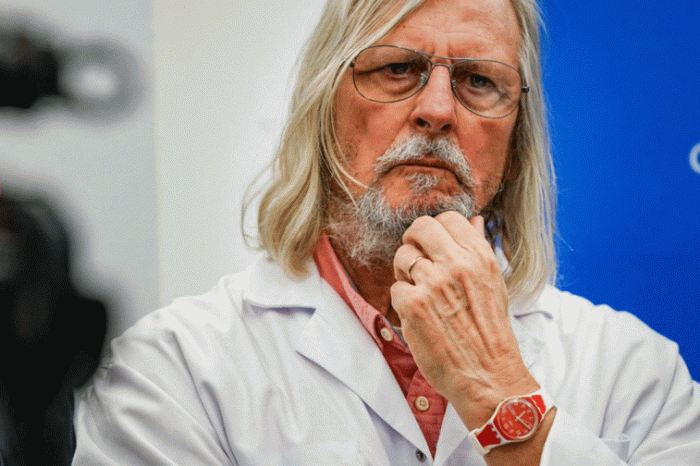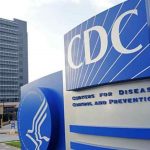BREAKING: New evidence shows CDC knew since at least 2005 that chloroquine is effective against coronaviruses

We’ve been covering coronavirus outbreak since January after the deadly coronavirus started to make headlines here in the United States. Since the virus is still new to the United States, we spent some time to learn more about the virus from two major authoritative health organizatitons: World Health Organization (WHO) and Centers for Disease Control and Prevention (CDC).
As it turns out, coronavirus is not new. In fact there are seven types of coronaviruses. As WHO explains on its own website, “Coronaviruses (CoV) are a large family of viruses that cause illness ranging from the common cold to more severe diseases such as Middle East Respiratory Syndrome (MERS-CoV) and Severe Acute Respiratory Syndrome (SARS-CoV). A novel coronavirus (nCoV) is a new strain that has not been previously identified in humans.”
In other words, the common cold is caused by a corona virus. Human coronaviruses, which are named for the crown-like spikes on their surface were first identified in the mid-1960s, according to information from CDC. Below are the seven types of coronaviruses:
Common human coronaviruses
- 229E (alpha coronavirus)
- NL63 (alpha coronavirus)
- OC43 (beta coronavirus)
- HKU1 (beta coronavirus)
- MERS-CoV (the beta coronavirus that causes Middle East Respiratory Syndrome, or MERS)
- SARS-CoV (the beta coronavirus that causes severe acute respiratory syndrome, or SARS)
- SARS-CoV-2 (the novel coronavirus that causes coronavirus disease 2019, or COVID-19)
According to CDC, people around the world commonly get infected with human coronaviruses 229E, NL63, OC43, and HKU1. Sometimes coronaviruses that infect animals can evolve and make people sick and become a new human coronavirus. Three recent examples of this are 2019-nCoV, SARS-CoV, and MERS-CoV.
Coronavirus treatment
With coronavirus pandemic claiming over 10,000 lives with at least 250,000 reported cases, the race to find treatment for people already infected with coronavirus became critical. The good news came on March 16, when a new academic study by a group of researchers, in consultation with Stanford University School of Medicine, UAB School of Medicine, and National Academy of Sciences researchers, found that over the counter anti-malaria pills Chloroquine may be highly effective at treating coronavirus COVID-19. Chloroquine works by enabling the body’s cells better to absorb zinc, which is key in preventing viral RNA transcription – and disrupting the often fatal cytokine storm.
However, the good news was short lived after FDA came out saying chloroquine has not yet been approved to treat coronavirus patients until sufficient data about the safety and effectiveness of chloroquine is available. Now, a new unearthed paper published in 2005 and shared with CDC, found that “Chloroquine is effective in preventing the spread of SARS CoV in cell culture.”
The study published in Virology Journal titled ‘Chloroquine is a potent inhibitor of SARS coronavirus infection and spread,” found that “Chloroquine, a relatively safe, effective and cheap drug used for treating many human diseases including malaria, amoebiosis and human immunodeficiency virus is effective in inhibiting the infection and spread of SARS CoV in cell culture. The fact that the drug has significant inhibitory antiviral effect when the susceptible cells were treated either prior to or after infection suggests a possible prophylactic and therapeutic use.”
Below is the abstract of their findings.
Background
Severe acute respiratory syndrome (SARS) is caused by a newly discovered coronavirus (SARS-CoV). No effective prophylactic or post-exposure therapy is currently available.
Results
We report, however, that chloroquine has strong antiviral effects on SARS-CoV infection of primate cells. These inhibitory effects are observed when the cells are treated with the drug either before or after exposure to the virus, suggesting both prophylactic and therapeutic advantage. In addition to the well-known functions of chloroquine such as elevations of endosomal pH, the drug appears to interfere with terminal glycosylation of the cellular receptor, angiotensin-converting enzyme 2. This may negatively influence the virus-receptor binding and abrogate the infection, with further ramifications by the elevation of vesicular pH, resulting in the inhibition of infection and spread of SARS CoV at clinically admissible concentrations.
Conclusion
Chloroquine is effective in preventing the spread of SARS CoV in cell culture. Favorable inhibition of virus spread was observed when the cells were either treated with chloroquine prior to or after SARS CoV infection. In addition, the indirect immunofluorescence assay described herein represents a simple and rapid method for screening SARS-CoV antiviral compounds.
Since SARS-CoV and SARS-CoV-2 (COVID-19) belong to the same family of virus, it shouldn’t come as a surprise that chloroquine is effective against both viruses. In addition, COVID-19 is 95% identical to SARS-CoV. So, the question is, if the CDC and FDA have been aware of the efficacy of chloroquine in treating coronavirus since at 2005, why hasn’t the FDA collaborated with other organizations and fast track the use of chroloroquine and its sister drug, hydroxychloroquine and safe thousands of lives? And why hasn’t chloroquine been mass produced and made available sooner?
Here is what Twitter user Ian Wilson said: “Given that CDC knows that Chloroquine/Hydroxychloroquine is an effective treatment for COVID-19 and a prophylactic against infection. There are grounds for everyone that has suffered and the families of those who have died for a Class Action Law suit against the CDC.”
Given that CDC knows that Chloroquine/Hydroxychloroquine is an effective treatment for COVID-19 and a prophylactic against infection.
There are grounds for everyone that has suffered and the families of those who have died for a Class Action Law suit against the CDC
— Ian Wilson (@Le_Nautonnier) March 19, 2020




